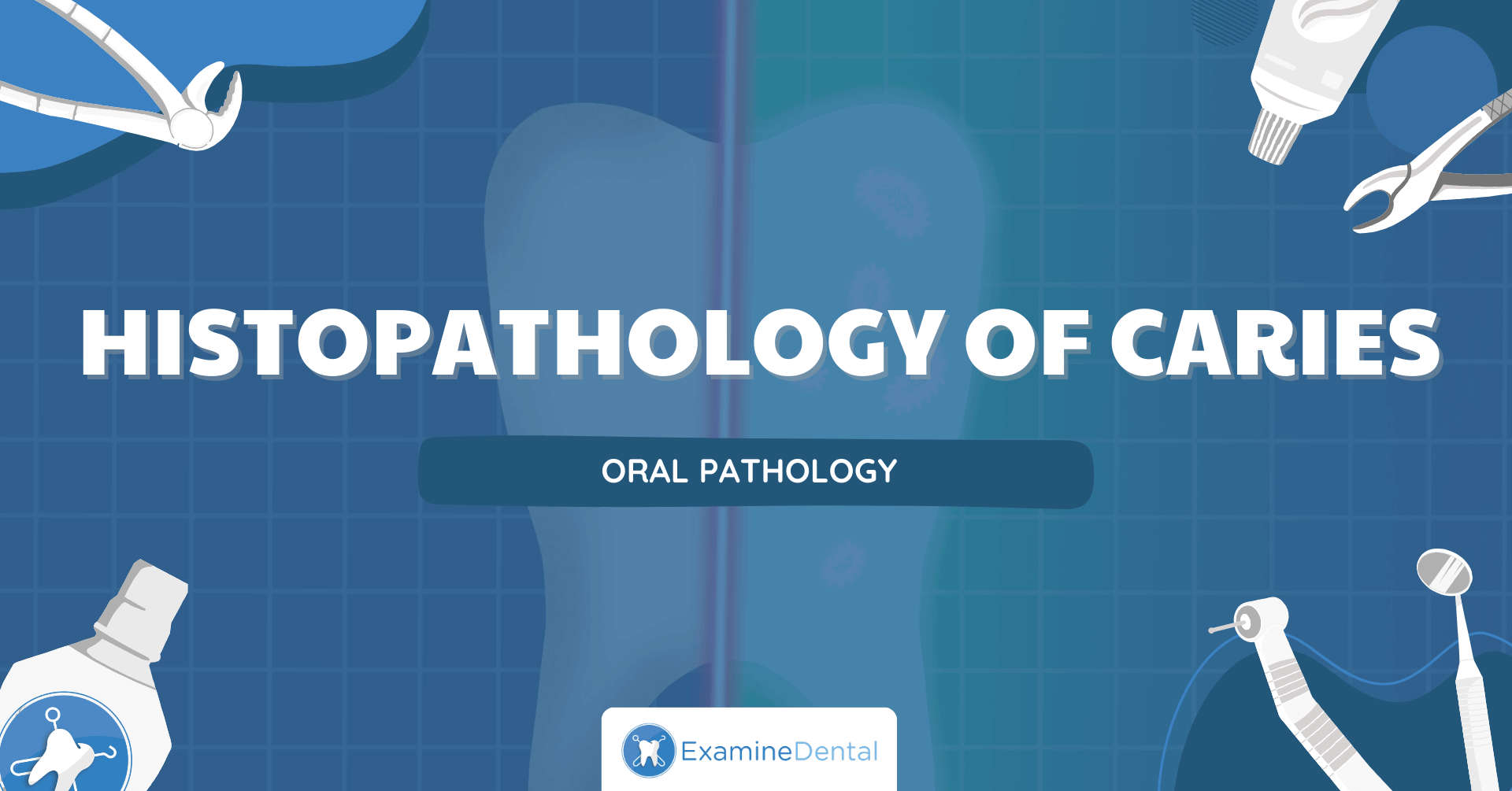
Histopathology of Caries
Contents
ToggleHistopathology of Caries
Objectives
By the end of these revision notes, you should:
The histopathology of caries varies in both pre-cavitated and cavitated lesions, as well as in enamel and dentine. These lesions have multiple zones that can be described. In this revision note, we will describe these various zones.
Enamel Caries (pre-cavitation)
Normal enamel is composed of various structures including:
- Enamel prisms
- Prism borders
- Striations
- Striae of Retzius (incremental growth bands)
- Surface zone
Changes in these various regions/structures will determine the nature of the lesion.
The common areas for carious to develop on enamel are smooth surfaces (below contact points), in pits and fissures and around existing restorations (recurrent caries).
Smooth surface caries
Site: typically occurs below contact points
Appearance: typically hard and shiny. May be a white opaque lesion or a brown spot lesion
Macroscopically:
- A conical lesion with the apex towards the amelo-dentinal junction (ADJ)
- Lateral spread at the ADJ
- A larger dentinal lesion

Subscribe to access ALL revision notes and cheat sheets!
We provide a wide range of revision notes and cheat sheets to help you study and prepare for exams! To access all we have to offer, head over and subscribe to ExamineDental now to supercharge your revision!
Pit and Fissure Caries

Microscopic Features of Enamel Caries

1) Translucent Zone

2) Dark Zone

3) Body of the Lesion

4) Surface Zone


Dentinal Caries

Pre-cavitation

Post-cavitation

Summary

